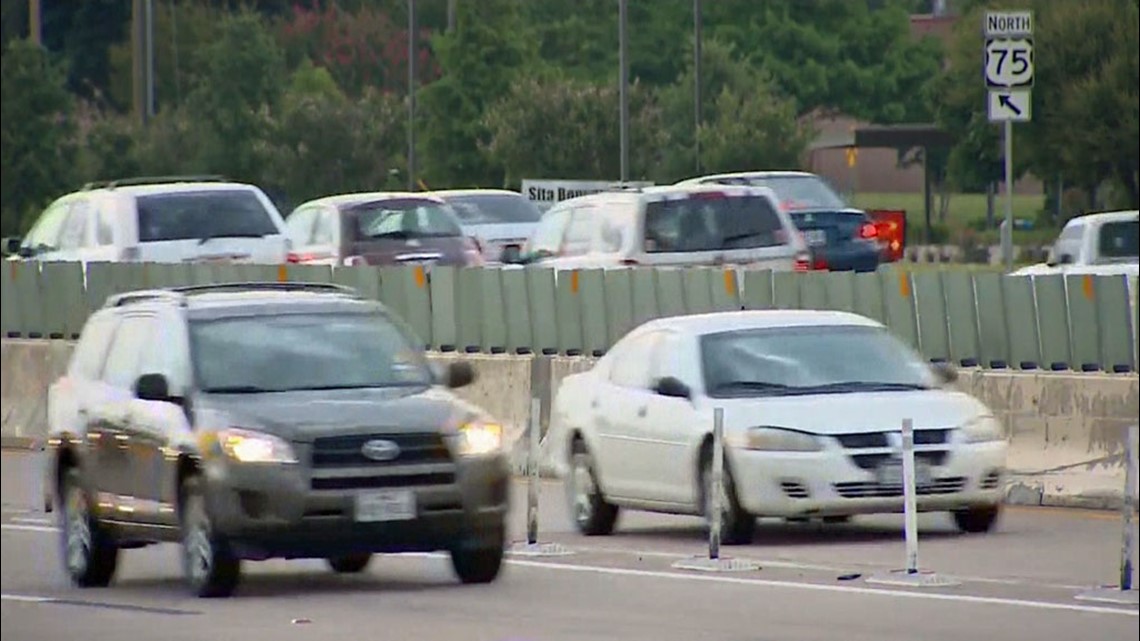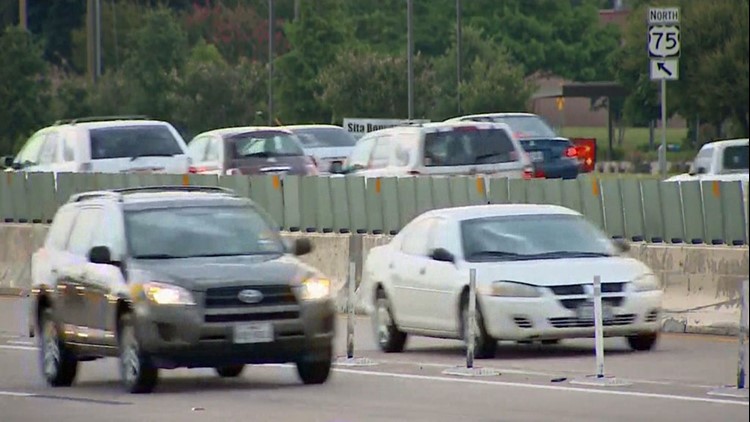‘Technology lanes’ coming to U.S. 75 HOV with low emission and EV component


The “Technology Lanes” may be the answer to congestion, under-utilization, and an exploding electric and low-emission vehicle market.
COLLIN COUNTY, Texas — It’s hard to imagine that U.S. Highway 75 was once a two-lane two-way road. Now, it’s one of the most utilized highways in the Metroplex. The exponential population growth and development up north make it a vital part of mobility plans.
“Education and mobility are the two biggies for why people come to areas. If traffic is really bad they’re not coming,” said Duncan Webb, a Collin County Commissioner and Chair of the Regional Transportation Council. For four years, he’s waited for the day to announce plans for U.S. 75 HOV lanes.
The under-utilized HOV, high occupancy vehicle, lanes of U.S. 75 between LBJ and Allen will be converted to a one-of-a-kind lane called the “Technology Lane.” Webb tells WFAA the project was funded two years ago.
The lanes will be general-purpose lanes for all vehicles. But, during morning and evening rush for two hours going south and two hours going north Monday through Friday, the lanes will be for high-occupancy vehicles, low emission and electric vehicles. This means Central Expressway will go from four general purpose lanes to five lanes except for between 7 a.m. and 9 a.m. and 5 p.m. and 7 p.m.
“It’s about time. Good job. We should be there because we’re helping with the environment,” said Terri Hurst who was charging her Tesla along U.S. Highway 75.
The plans required federal approval because the HOV lanes were funded federally with air quality money. Webb tells WFAA that the Regional Transportation Council, TxDOT, and FHWA (Federal Highway Administration) have discussed more than a half a dozen options to improve congestion and reduce under-utilization of the lanes.
These lanes will be a first for Texas. And, for Duncan, finally an answer to the many complaints over the years.
“Not only do I see the pylons but it’s empty but, of course, that is irritating me,” he said. Webb tells WFAA that any stalled-out vehicles on HOV lanes are very difficult to move because of the pylons.
Under these new lanes, the flexible plastic pylons will be gone for good. The pylons can be found in varying stages of disrepair because drivers have constantly run over them to enter and exit the lane.
“There’s not many of the standup plastic cones left,” laughed Steve Cochran.
The new technology lane will be striped like a regular line, but thicker.
“It’ll just be a dash. You can go in and out in and out anytime you want. Richardson is ecstatic when I threw this proposal out,” said Webb. The city of Richardson currently does not have any entrances along the HOV lane.
Webb says the second phase of the project is to coordinate with the cities along the corridor and their signals on the service roads to manage accidents and divert traffic using the new general-purpose lanes.
The technology lanes may be the answer to congestion, under-utilization, and an exploding electric and low-emission vehicle market. The required public notices, input meetings, environmental processes, are required to complete the project. Webb says the hope is to have the lanes up and running by 2026. Construction for the project could start as early as the end of this year.
Share this news on your Fb,Twitter and Whatsapp
Times News Network:Latest News Headlines
Times News Network||Health||New York||USA News||Technology||World News